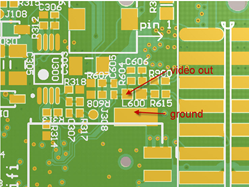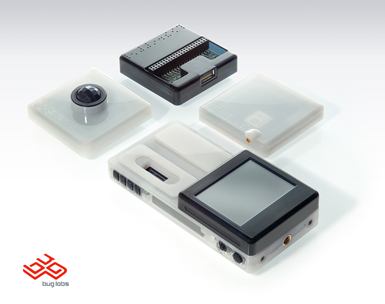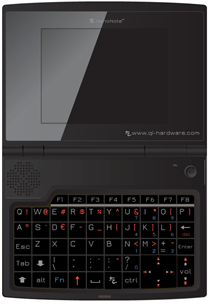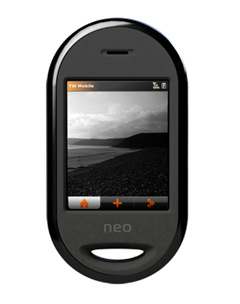After CES wrapped up last week, I began thinking about open source hardware could mean for consumer gadgets. For the most part, I have (somewhat subconsciously) been equating open source hardware with DIY, hobbyist PCBs, wires, pin headers, and exposed components. Something that I could hack and rebuild myself, with some parts and a soldering iron.
But what about something that was maybe a little more user-friendly and ready to go right out of the box? To me, one aspect of open source is accessibility, both in terms of depth and breadth. By depth, I mean the level at which someone could modify, reuse, repurpose, and rebuild the hardware. Open source hardware that allows one to hack at the circuit level is “deeper” than a device that only allows hacking at the firmware level.
Breadth of accessibility could mean many things, though. It may mean, “how many platforms is it compatible with?” or “how many tasks could this hardware be repurposed to serve?”
Both these questions are really asking the same thing, which is: “how many people could make use of this hardware?”
That raises a more fundamental issue: can something be open source hardware, hackable, and DIY- yet be usable as is, right out of the box? I can imagine a consumer gadget that is ready to go, but for the adventurous, it could be customized indefinitely. Perhaps it could even inspire a non-tinkerer to start messing with their hardware?
With that in mind, I scoured the web for open source hardware that wasn’t in kit form, was a little more finished, but is built to be reused, to engender further innovation. To help categorize some of these gadgets on that consumer spectrum, I’ll provide a not-so-scientific labeling regarding intended out of the box use, as well as “hardware hackability”. In no particular order…
Chumby

Ah, the Chumby. The internet-alarm clock-information-station does more than just run Linux. With a 3.5” touchscreen, an ARM9, integrated Wi-Fi, and an accelerometer, all wrapped up in a rotund, friendly enclosure, there’s no question that it’s a bona fide consumer gadget. What’s noteworthy is that it’s open source hardware hackable as well, with available schematics, in addition to a wiki where people share hacks like adding a video connector to the chumby One.
Intended Use: Mainstream
Hardware Hackability: Good

Bug Labs’ BUG
The BUG is an open source hardware platform consisting of modular, functional components. It’s similar to the Arduino in that there is a base + “shield” add-on structure. The BUG platform is Linux-based and driven by an ARM11 processor and has many features comparable to a mobile computer as well as serial interfaces. Each module is encased in a sleek plastic, with a recessed connector for plug-and-play functionality.
 While some of the schematics are available online, the finished casing, lack of exposed circuitry makes it hard to hack, and a basic starter set will run well over $700, so it’s not the most accessible platform for a hacker on a budget.
While some of the schematics are available online, the finished casing, lack of exposed circuitry makes it hard to hack, and a basic starter set will run well over $700, so it’s not the most accessible platform for a hacker on a budget.
Intended Use: Professional
Hardware Hackability: Moderate
VIA OpenBook
The VIA OpenBook was a concept for an open source hardware netbook released in 2008. The CAD reference design files were shared, and VIA even posted movies where the computer was taken apart “to reveal the internal hardware guts”.
 This was especially interesting for me, since I wanted to overclock my HP Mini 311 netbook, and make other mods only previously available to desktops. It would certainly be extremely interesting to have a truly open source hardware computer that I could hack.
This was especially interesting for me, since I wanted to overclock my HP Mini 311 netbook, and make other mods only previously available to desktops. It would certainly be extremely interesting to have a truly open source hardware computer that I could hack.
Unfortunately, while VIA has long since launched other netbooks, it seems like this was more a marketing attempt than a full-fledged project.
Intended Use: N/A (vaporware)
Hardware Hackability: N/A (vaporware)
NanoNote
Another interesting project, the Qi Hardware NanoNote, was founded by a set of former OpenMoko employees. Given their experience, it makes sense that this group would come together to launch an open source hardware handheld mobile PC. As customary for open source devices, the computer boots Linux. They’ve also applied an infrastructure by which hardware changes are shared and updated collaboratively, in a manner similar to that found in software.

The first edition of the NanoNote is expected to ship in the near future, and hardware information is released under a CC-BY-SA copyleft license. While the open source aspects clearly apply in the development stage, it’s unclear whether the finished device itself will be hardware hackable.
Intended Use: Mainstream
Hardware Hackability: Not expected
OpenMoko Neo FreeRunner
 Finally, OpenMoko’s Neo FreeRunner is the classic example of the open source, finished, consumer gadget that “made it” from a vaporware concept, to stylized Blender/CAD images, to a real, physical device. The open source smartphone has sold 10,000 units since its July 2008 launch runs Linux and Google Android. Not only is the software and firmware open source, however, the hardware schematics are available, and the $230 device is sold with a separate “DBoard” for debugging. Full-on hardware hackability, for an extra $99. Hardware hacking at a premium? Perhaps there is a business model after all, but that’s a story for a different day.
Finally, OpenMoko’s Neo FreeRunner is the classic example of the open source, finished, consumer gadget that “made it” from a vaporware concept, to stylized Blender/CAD images, to a real, physical device. The open source smartphone has sold 10,000 units since its July 2008 launch runs Linux and Google Android. Not only is the software and firmware open source, however, the hardware schematics are available, and the $230 device is sold with a separate “DBoard” for debugging. Full-on hardware hackability, for an extra $99. Hardware hacking at a premium? Perhaps there is a business model after all, but that’s a story for a different day.
Intended Use: Mainstream
Hardware Hackability: Excellent (see picture below)

These are five examples of projects taking open source hardware to a new level. Rather than “raw” electronic kits that hobbyists assemble to use, these products aim to blend principles and practice of open source hardware with consumer, off-the-shelf usability.
I’ll close with a couple thoughts that came to mind while reading about these projects. Consumer open source hardware can mean multiple things:
1) Hardware that is built collaboratively, and in an open source way, but produces a finished device whose hardware is not meant to be altered
2) Hardware that is finished, but reference designs and schematics are shared for future use and innovation
3) Hardware that can be used and customized however the consumer wishes: from no modifications at all, to circuit bending, trace cutting, resoldering, and hardware level, physical hacking
I think it is the last one that the electronics world is missing. If open source hardware is fundamentally about letting the customer truly “own” the device, it’s important for that device to be accessible at a mainstream, usable off-the-shelf level (to become widespread), but also designed to be completely hackable for whatever purpose the customer intended.
It doesn’t have to have rough circuit boards, nor does it have to be the latest sleek device designed by IDEO. It’s about giving the user control and freedom to use the product at any level.
I wonder why there aren’t more open source hardware consumer gadgets out there. Perhaps it’s a blend of hackable and finished that doesn’t currently exist, but browsing the outputs of the latest CES, there’s a wealth of devices that could really use some open counterparts.
2 comments:
nice post, man. i was looking around on this topic recently, and found some links too (no, this isn't link spam, these are actually relevant!)
A short snippet, although more sw oriented:
http://gadget-reviews.org/the-best-open-source-gadgets/
I like this writeup too:
http://news.cnet.com/8301-13505_3-10423776-16.html
The WSJ covered it, but more from a circuit building angle:
http://online.wsj.com/article/SB10001424052748703499404574559960271468066.html
A video from CES made me laugh. Sony is bringing out an "internet device", the Sony Dash, that looks very much like a Chumby. In fact, it runs all the standard Chumby apps.
http://ces.cnet.com/8301-31045_1-10425924-269.html
But I'm willing to be that a) It won't be open-source and b) it will soon go the way of the Aibo.
-Rich
Post a Comment